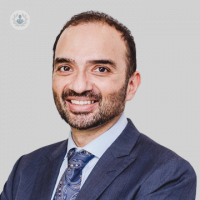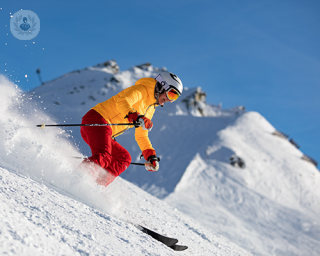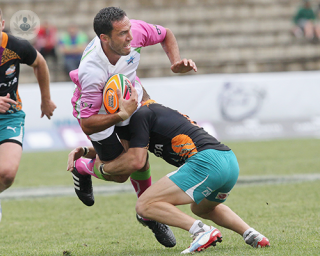Medial collateral ligament
Mr Amir Qureshi - Orthopaedic surgery
Created on: 11-13-2012
Updated on: 07-19-2023
Edited by: Conor Lynch
What is the medial collateral ligament?
The medial collateral ligament, also called the tibial collateral ligament, is one of the four most important ligaments of the knee. It extends from the inside of the lower thigh bone to the inside of the upper shin bone.

What is the function of the medial collateral ligament?
The medial collateral ligament provides stability to the knee and limits its movement from side to side. Injury to the ligament often results in a partial or complete tear or excessive stretching of the ligament.
What are the pathologies of the medial collateral ligament?
You may have damaged the medial collateral ligament if you have pain in the inner part of the knee, if the knee feels unstable and you think it might give way or become locked, or if you feel pain when bending or stretching the knee or when walking.
Most injuries to the medial collateral ligament can occur if the lower leg is moved outward at the knee; if a blow is received to the lower outer thigh; or if you put one foot ahead of the other to increase momentum (in skiing, for example). This causes total or partial ligament distension due to the excessive stretching of the ligament by forcing the joint beyond its range of motion.
This injury, which is very common in athletes, is known as a sprain or tear of the medial collateral ligament of the knee. It is common in football players, but also in sports such as skiing, handball, and rugby.
There are different grades of injury:
- Grade I: There is moderate pain, little swelling, and you can move the joint.
- Grade II: You feel pain, accompanied by joint instability, inflammation and a loss of function.
- Grade III: Joint function is severely affected, with high instability, swelling, and pain.
How is the medial collateral ligament treated when damaged?
Treatment for a medial collateral ligament injury will depend on its stage. Thus, for grade I injuries, treatment will normally be conservative. This involves immobilising the joint and rehabilitation. For grade II and III injuries, the orthopaedic spealist should study the injury on an individual basis and decide whether definitive conservative treatment or a surgical procedure is most appropriate.
Physiotherapy is essential for a complete recovery. The main objective is to reduce pain and inflammation so that you can walk correctly, and also do exercises with contrast hydrotherapy and electrotherapy without feeling pain. Hydrotherapy is also extremely helpful since it reduces stress during therapy and allows for painless movements against water resistance, which also strengthens the muscles.
The physiotherapy exercise programme should aim at increasing knee flexion, recovering stability and gaining muscle. To this end, the exercises will be gradually increased.
Also recommended is deep transverse friction massage of the muscle fibres, to promote the reorganisation of the ligament fibres and greater tissue regeneration, enabling nutrients to pass through more easily.
Some specialists also recommend platelet-rich plasma therapy. These are proteins that are naturally made by your body and help repair and regenerate tissues after injury. Thus, after extracting a small amount of blood from your body, it is treated and platelet-rich plasma is obtained, which is then injected directly into the injury.
Which specialist treats pathologies of the medial collateral ligament?
Various specialists treat injuries to the medial collateral ligament, but it is mainly orthopaedic surgeons specialising in knee problems who will assess the severity of the injury. However, depending on the injury grade, the physiotherapist may also be involved in treating pathologies of the medial collateral ligament.






